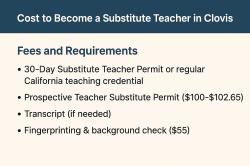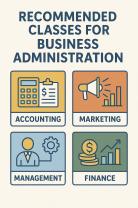What is economics essay example?
Economics Essay Example: How to Structure and Write Effectively
Writing an economics essay requires a combination of analytical thinking, evidence-based arguments, and clear writing. An economics essay example serves as a model to help students understand how to organize ideas, present data, and build logical arguments.
What is an Economics Essay Example?
An economics essay example is a sample essay that demonstrates the proper structure, style, and content expected in an academic economics paper. It shows how to:
Introduce an economic issue or question
Develop arguments supported by data and theory
Conclude with meaningful insights or recommendations
These examples are useful for learning how to format essays, integrate economic concepts, and apply critical thinking.
Key Components of an Economics Essay
Introduction
Introduce the topic clearly and concisely.
Include a thesis statement that outlines the main argument or purpose of the essay.
Literature Review or Background
Summarize relevant economic theories, research, or case studies.
Provide context for your analysis and show familiarity with the topic.
Main Body / Analysis
Present arguments in well-structured paragraphs.
Use data, charts, and graphs to support your points.
Apply economic theories to real-world examples.
Compare different perspectives or policy options if relevant.
Conclusion
Summarize the main findings and restate the thesis.
Offer recommendations or implications based on your analysis.
References / Citations
Include credible sources to back your arguments.
Follow the required citation style (APA, MLA, Chicago, etc.).
Tips for Writing an Effective Economics Essay
Plan Before Writing: Outline your essay to organize your thoughts.
Use Clear and Concise Language: Avoid unnecessary jargon.
Support Claims with Evidence: Incorporate statistics, studies, and examples.
Revise and Edit: Check for grammar, clarity, and logical flow.
Follow Formatting Guidelines: Ensure your essay meets academic standards.
An economics essay example serves as a practical guide to help students understand the structure, style, and content of a high-quality essay. By analyzing examples and following a clear framework, you can improve your writing skills, present well-supported arguments, and excel in your economics coursework.
An economics essay requires you to apply economic principles and theories to analyze a particular issue, evaluate policies, or explain economic phenomena. It's a structured argument supported by evidence and logical reasoning.
Example of an Economics Essay
While a full essay cannot be provided here, let's consider an example scenario and how an essay might approach it.
Essay Prompt Example: "Discuss the potential economic impacts of a significant increase in the national minimum wage on a developed economy, considering both positive and negative effects."
Possible Essay Structure/Points:
Introduction: Define minimum wage and its purpose. State the thesis (e.g., "A significant increase in the national minimum wage can have complex and varied economic impacts, potentially leading to both increased consumer spending and job losses, with the net effect depending on various market conditions and elasticity of demand and supply for labor.").
Body Paragraph 1: Positive Impacts (Increased Consumer Spending/Reduced Poverty):
Explain how higher wages for low-income workers could increase disposable income.
Discuss the potential for a "multiplier effect" as increased spending stimulates aggregate demand.
Mention the potential for poverty reduction and improved living standards for low-wage earners.
Economic concepts: Aggregate demand, disposable income, income inequality, poverty line.
Body Paragraph 2: Negative Impacts (Job Losses/Inflation):
Explain how increased labor costs might incentivize businesses (especially small businesses) to reduce staff, slow hiring, or automate.
Discuss the concept of elasticity of demand for labor and how it influences job losses.
Explain how businesses might pass on increased costs to consumers through higher prices, leading to cost-push inflation.
Economic concepts: Supply and demand for labor, unemployment, inflation, firm profitability, labor market distortions.
Body Paragraph 3: Other Considerations/Nuances:
Discuss the impact on different sectors (e.g., highly competitive industries vs. those with market power).
Consider the role of monopsony power in labor markets.
Analyze the potential for increased productivity to offset wage increases.
Mention the importance of the initial wage level and the size of the increase.
Economic concepts: Market structure, productivity, monopsony.
Conclusion: Summarize the main arguments, reiterate the nuanced nature of the impact, and possibly suggest areas for further research or policy considerations.
Structure and Format of Economics Essays
Economics essays generally follow a standard academic essay structure, emphasizing clarity, logical flow, and evidence-based argumentation.
Title: Clear, concise, and reflective of your essay's topic.
Introduction:
Hook: Grab the reader's attention (e.g., a relevant statistic, a real-world scenario).
Background: Briefly introduce the economic issue or topic.
Thesis Statement: A concise sentence or two outlining your main argument or the central point you will explore. It should clearly state your position or the scope of your analysis.
Body Paragraphs (Typically 3-5, but varies):
Each paragraph should focus on a single main idea that directly supports or elaborates on your thesis.
Topic Sentence: Start each paragraph with a clear topic sentence that introduces the main idea of that paragraph.
Explanation/Analysis: Explain the economic concept or theory relevant to your point.
Evidence/Examples: Provide specific data, real-world examples, historical context, or theoretical models to support your claims. Refer to sources where necessary.
Elaboration/Link: Explain how the evidence supports your point and how this point relates back to your overall thesis.
Conclusion:
Summary: Briefly restate your main arguments (without introducing new information).
Restate Thesis: Rephrase your original thesis in new words, reflecting the insights gained from your analysis.
Concluding Thought/Implication: Offer a final thought, a broader implication of your findings, a potential policy recommendation, or an area for future research. Avoid introducing completely new arguments.
References/Bibliography (if required): List all sources cited in your essay using an appropriate citation style (e.g., APA, Chicago, Harvard).
Formatting:
Use clear, standard fonts (e.g., Times New Roman, Arial).
Maintain consistent spacing (usually double-spaced).
Use headings and subheadings (if the essay is long and complex) to improve readability.
Ensure proper citation for all external information.
Key Concepts to Include in an Essay
A strong economics essay demonstrates your understanding and application of core economic concepts. The specific concepts will depend heavily on your essay's prompt, but generally include:
Fundamental Economic Principles:
Scarcity and Choice: The basic economic problem of unlimited wants vs. limited resources.
Opportunity Cost: The value of the next best alternative foregone when a choice is made.
Incentives: Factors that motivate individuals and firms to act in a certain way.
Marginal Analysis: Decision-making based on the additional benefits vs. additional costs.
Microeconomic Concepts (Individual markets, firms, consumers):
Supply and Demand: How prices and quantities are determined in markets.
Elasticity: Responsiveness of quantity demanded/supplied to changes in price, income, etc.
Market Structures: Perfect competition, monopoly, oligopoly, monopolistic competition.
Consumer Behavior: Utility, consumer surplus.
Producer Behavior: Production costs, profit maximization, producer surplus.
Market Failure: Externalities, public goods, information asymmetry.
Macroeconomic Concepts (National/global economy):
Aggregate Demand and Aggregate Supply: Total demand and supply in an economy.
GDP (Gross Domestic Product): Measure of economic output.
Inflation: General increase in prices.
Unemployment: Labor market conditions.
Fiscal Policy: Government spending and taxation.
Monetary Policy: Central bank control of money supply and interest rates.
Economic Growth: Long-term increase in productive capacity.
International Trade: Comparative advantage, exchange rates, trade barriers.
Always define any key economic terms you use, especially if they are technical, and explain how they apply to your specific analysis.













